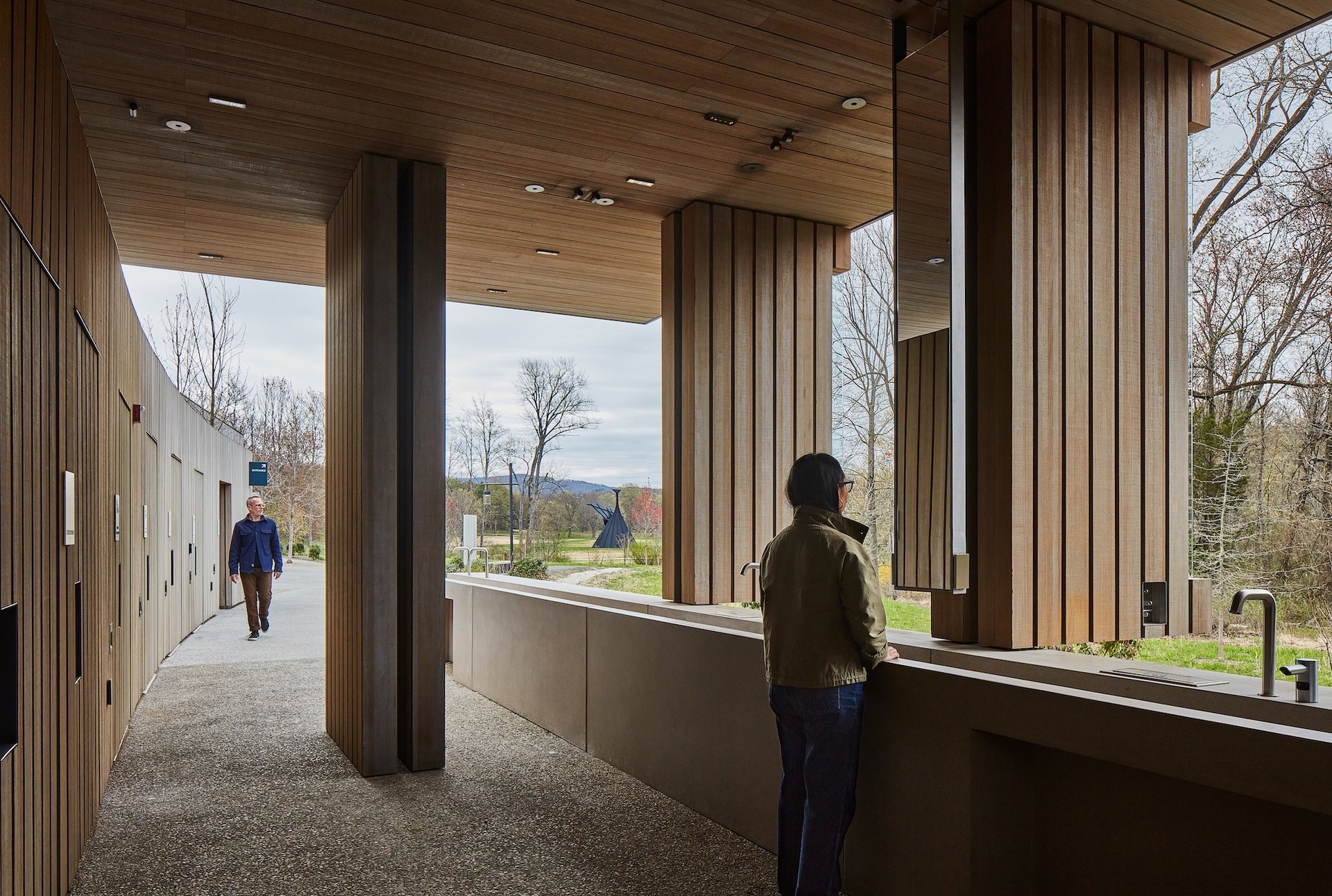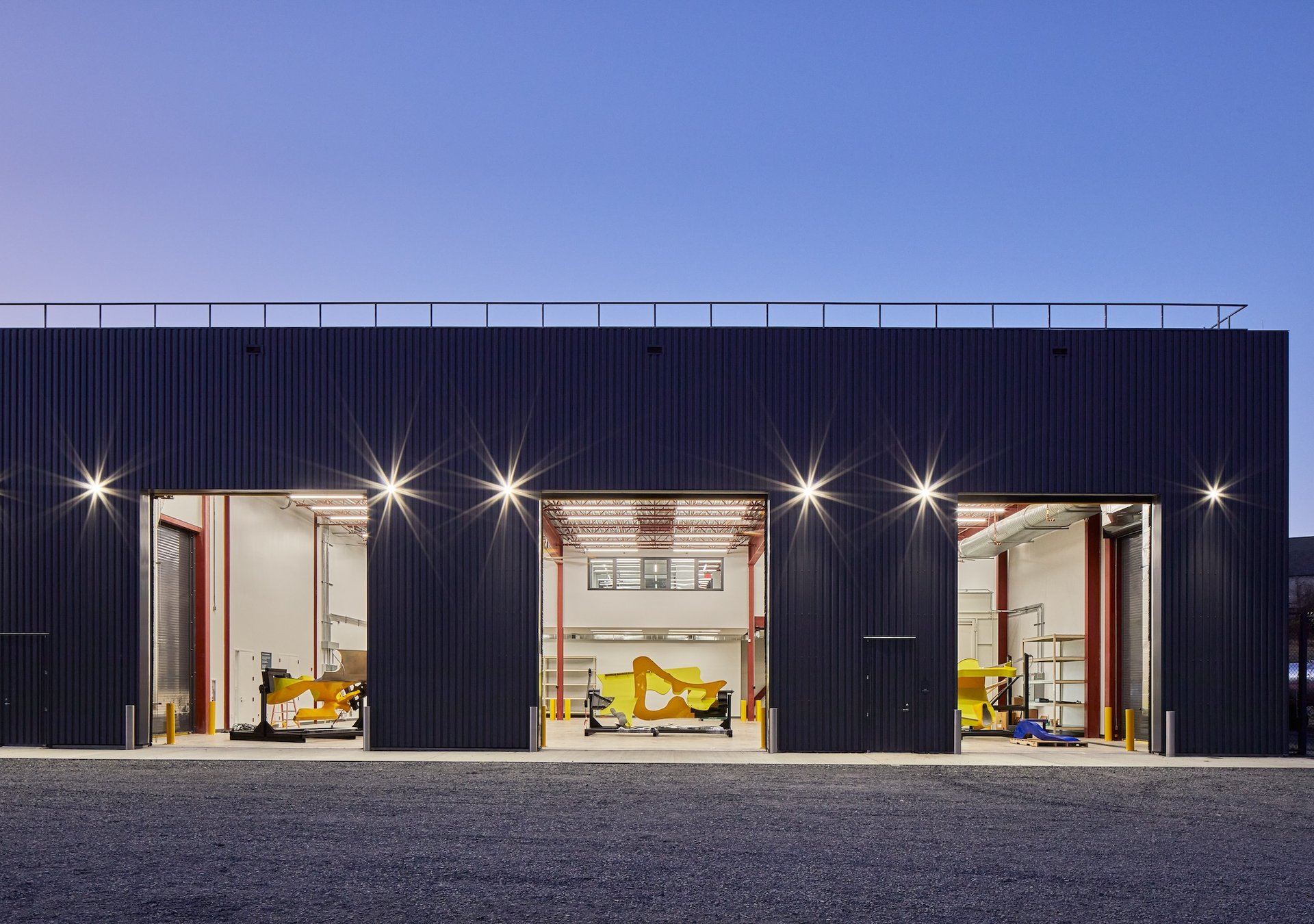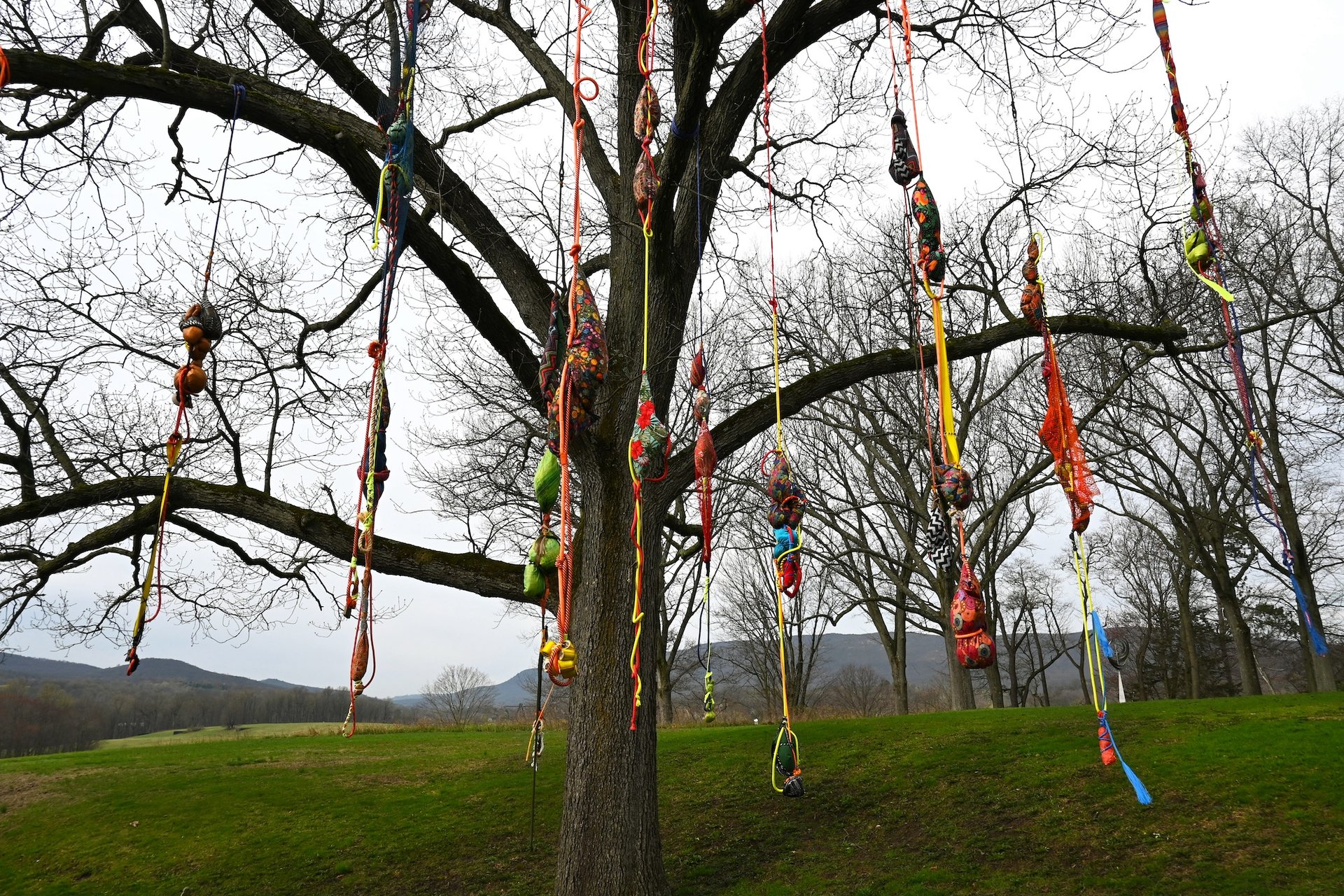Megasculpture workshop and landscape reclamation drive Storm King Art Center regeneration
Storm King Art Center holds one of the most significant collections of outdoor sculpture in the US, with more than 100 works by artists such as Alexander Calder, Isamu Noguchi, Mark di Suvero and Maya Lin spread across its 500-acre campus in upstate New York. The renowned sculpture park and art centre unveils a transformative, $53m capital project this month. The years-long undertaking has created more room for art and enhanced the visitor experience. The project, with a holistic focus on environmental sustainability, includes a new conservation and fabrication building (marking Storm King’s first architectural work since its founding in 1960), a revamped entrance and extra green space, plus more than 650 additional trees.
A significant part of the project has entailed the regreening of four acres previously occupied by Storm King’s main car park and consolidating two previously separate public entrances into one (the other car park has been expanded to accommodate more visitors). The landscape architecture firm Reed Hilderbrand worked in collaboration with Gustafson Porter + Bowman to lead this part of the project, which visually partitions the parking from the monumental outdoor art.
Reed Hilderbrand designed a short sloping path that runs from the newly consolidated car park and the new ticketing pavilion to Storm King’s main grounds. Beka Sturges, a partner and principal at the firm, says that the path feels natural and camouflages the area, giving visitors time to pause before entering the sculpture park itself. The slight change in gradient renders the 580-space car park “almost undetectable” from the sculpture park, she says. “It’s a simple, poetic design that brings attention to the woods and builds off the native environment.”
The ticket and information pavilion and outdoor lobby at Storm King’s new visitor entrance Photo: Richard Barnes, courtesy Storm King Art Center
Sturges adds that removing the old car park was a “straightforward idea in thinking about securing more space for art”. What was more complex was “knitting parking into sensitive ecologies”, she says, “because the landscape is alive”. Hundreds of new trees have been planted on the grounds, all of them native species. For the higher ground, the landscape architects selected trees that thrive in drier conditions (such as oaks and tulip trees), while other areas contain red maples, sweet gums and black gums—all of which have vibrant scarlet leaves in autumn.
As for Storm King’s new and revamped buildings, the architecture firms WXY and Heneghan Peng worked on their design. Claire Weisz, a co-founder of WXY, says they wanted to consider how the buildings would work to “support and shape the outdoor spaces”, and not disrupt the experience of art and nature. The new ticketing booths, for example, are attached to a 19th-century fieldstone house that once served as Storm King’s museum building. The booths aim to blend in with the structure and were made following exhaustive research into wood typologies—Storm King has history with wood rot. The architects selected Abodo, a fast-growing and light-coloured wood that is heat-treated to make it more stable and insect-repellent, and used the same muted material for new toilets at the entrance.

A view from the new restroom pavilion’s open-air handwashing basin into the outdoor lobby and the grounds beyond Photo: Richard Barnes, courtesy Storm King Art Center
Conservation facility
The David R. Collens Building for Conservation, Fabrication and Maintenance—named after Storm King’s director from 1976 to 2021—was designed with careful consideration for the landscape. Much thought was given to the “right colour and shape” that would go with its surroundings, according to Róisín Heneghan, a founding partner of Heneghan Peng. She points out that, at a certain distance, the giant grey-clad building “disappears into the landscape relative to the tree line behind and the actual palette of the colours on site”.
Conservation work on Storm King’s extensive art collection previously happened offsite or in makeshift structures that were “not adequate for its world-class art”, Heneghan says. The new building allows Storm King to “conserve the work in the way it deserves” and offers resident artists a more suitable environment for working on large-scale sculptures. “You don’t want to restore work in an environment that’s going to be drastically different from what it’s returning to,” she says. “You want to consider that the work is going to be made to withstand the rigours of an outdoor environment.”
The Collens Building has doorways that are 22 feet tall, a 1,000 sq. ft woodshop and a spray-painting workshop that can be used for both painting and cleaning giant sculptures. The building has been fully functional for months before Storm King’s public reopening. Ronald Bladen’s Untitled (Three Elements) (1965) underwent maintenance there, and works by Arlene Schechet—the subject of a campus-spanning exhibition last year—were brought in for cleaning before being sent off to their next destinations.

View into the main workspace of the new David R. Collens Building for Conservation, Fabrication and Maintenance Photo: Richard Barnes, courtesy Storm King Art Center
Nora Lawrence, Storm King’s executive director since January 2025, says the capital project responds to the sculpture park’s spike in attendance in recent years. The centre expects to host more than 200,000 visitors this season. “We are now prepared to receive people in a more consistent way than before,” says Lawrence, who first joined Storm King as a curator in 2011. Subsequently chief curator, she spearheaded the curatorial programme and secured permanent commissions such as Sarah Sze’s Fallen Sky (2021) and Martin Puryear’s Lookout (2023).
New site-specific art
Storm King reopens with several new commissions, including Kevin Beasley’s Proscenium | Rebirth/Growth: The Watch/Harvest/Dormancy: On Reflection (2025), which mixes textiles and organic materials with resin and considers the politics of outdoor spaces and leisure. Dionne Lee, the photographer and 2025 Guggenheim fellow, has created an installation called Between the Falling Leaf and the Surface of Rock (2024) using a cyanotype-like process to create imagery atop rocks that is visible both up close and from afar.

Sonia Gomes’s Ó Abre Alas (2025) at Storm King Courtesy the artist, Mendes Wood DM and Pace Gallery. Photo courtesy Storm King Art Center
Sonia Gomes has made her first site-specific outdoor work, Ó Abre Alas (2025), specifically for Storm King. It consists of fishing line and other materials suspended from a tree near the sculpture park’s indoor gallery space. Gomes was particularly drawn to Storm King’s trees—she refers to trees in general as “one of God’s greatest art projects”, Lawrence says. Inside the galleries, an exhibition of Gomes’s textile sculptures considers the influence of nature on her art.
Meanwhile, some of Storm King’s famed sculptures have been relocated, giving visitors a chance to see familiar works in new contexts. For example, Chakaia Booker’s A Moment in Time (2004) and Dorothy Dehner’s Cenotaph #4 (1972) have both been moved closer to the sculpture park’s entrance. “We are working to activate areas that are not places where people expect us to have exhibitions,”Lawrence says. “At the same time, we are learning more about our site and its possibilities and what artists might propose and bring to us.”




